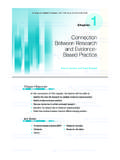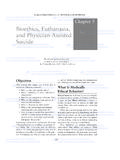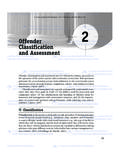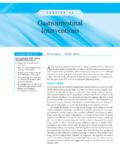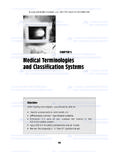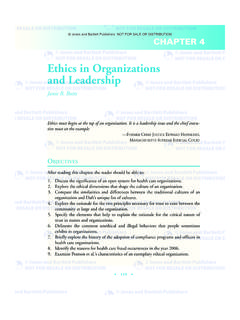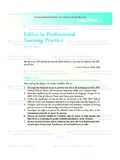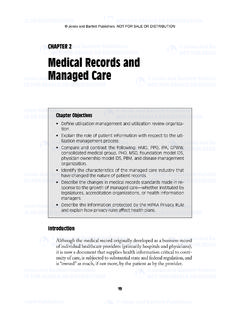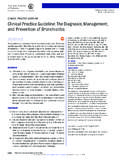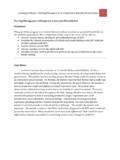Transcription of 3 Virus Replication Cycles
1 Jones and Bartlett Publishers. NOT FOR SALE OR DISTRIBUTION. A scanning electron micrograph of Ebola Virus particles. Ebola Virus contains an RNA genome. It causes Ebola hemorrhagic fever, which is a severe and often fatal disease in hu- mans and nonhuman primates. CHAPTER Virus Replication Cycles 3. In the struggle for survival, the OUTLINE. One-Step Growth Curves Key Steps of the Viral Replication cycle 1. Attachment (Adsorption). The Error-Prone RNA Polymerases: Genetic Diversity Targets for Antiviral Therapies RNA Virus Mutagens: A New Class of Antiviral Drugs?
2 2. Penetration (Entry). ttest win out at the expense of 3. Uncoating (Disassembly and Virus File 3-1: How Are Cellular Localization). their rivals because they succeed Receptors Used for Viral Attachment 4. Types of Viral Genomes and in adapting themselves best to Discovered? Their Replication their environment. 5. Assembly 6. Maturation Refresher: Molecular Biology Charles Darwin 7. Release 46. 46 1/18/08 3:19:08 PM. Jones and Bartlett Publishers. NOT FOR SALE OR DISTRIBUTION. CASE STUDY. The campus day care was recently closed during the peak of the winter flu season because many of the young children were sick with a lower respiratory tract infection.
3 An email an- nouncement was sent to all students, faculty, and staff at the college that stated the closure was due to a metapneumovirus outbreak. The announcement briefed the campus com- munity with information about human metapneumonoviruses (hMPVs). The announcement stated that hMPV was a newly identified respiratory tract pathogen discovered in the Netherlands in 2001. New tests confirm that it is one of the most significant and common viral infections in humans. It is clinically indistinguishable from a viral relative known as respiratory syncytial Virus (RSV).
4 Both RSV and hMPV infections occur during the winter. hMPV may account for 2% to 12% or more of previously unexplained pediatric lower respiratory infections for which samples are sent to diagnostic laboratories, and a lesser percentage in adults. Both hMPV and RSV cause upper and lower respiratory tract infections associated with serious illness in the young, immunosuppressed, elderly, and chronically ill. Common symptoms include cough, fever, wheezing or exacerbation of asthma, and rhinorrhea (runny nose). It can produce severe enough symptoms to cause intensive care admission and ventilator support.
5 Healthy adults can get a mild form of the disease that is characterized by a cough, hoarseness, congestion, runny nose, and sore throat. Members of the campus day care staff were doing their best to limit the epidemic spread of the hMPV outbreak at the center. Primary care physicians need up-to-date knowledge and heightened awareness to recognize this new viral disease in patients. I. n the previous chapter you learned that viruses are dependent upon host cells for their reproduction, yet to do so viruses must overcome certain cellular constraints. Only those viruses that have been able to adapt to their hosts have been able to exist in nature.
6 This chapter focuses on experiments such as one-step growth curves, which are used to study Virus host interactions. These studies have provided information about the events that occur at each step of the infection cycle (attachment, penetration, uncoating, Replication , assembly, maturation, and release), including the intricate details of the strategies that animal and human viruses use to express and replicate their diverse genomes. One-Step Growth Curves Virologists could not study animal and human viruses well in the laboratory before tissue culture methods were developed by John F.
7 Enders, Thomas H. Weller, and Frederic C. Robbins in the late 1940s. Before their work, viruses were injected into animals and tissues were analyzed for the pathological signs of viral infection. Experimental animals were dif- ficult to work with and expensive to maintain. Another drawback was that animals were not very sensitive to infection with human viruses due to the species barrier and the animal immune response. 47. 47 1/18/08 3:19:17 PM. Jones and Bartlett Publishers. NOT FOR SALE OR DISTRIBUTION. 48 CHAPTER 3 Virus Replication Cycles Figure 3-1 General Procedure: One-Step Growth Curves The diagram briefly outlines the steps in- volved in performing one-step growth ex- Step 1: periments.
8 Step 5 includes a photograph Infect monolayers of tissue of viral plaques (clearings where the Virus culture cells (using a vertical laminar flow biosafety hood). destroyed the cell monolayer). The plaque and allow the infection to assay is a quantitative assay used to de- proceed in a CO2 incubator. termine the number of viruses present in a given sample. The results of these assays can be used to generate a one-step growth curve for a particular Virus . For more details Step 2: about virological methods see Chapter 5, Monitor experiments via Laboratory Diagnosis of Viral Diseases.
9 CO2 incubator. inverted microscope. Step 3: Collect infected cell lysates at various time points after infection. Step 4: Perform serial dilutions on infected cell lysates and do plaque assays. One-Step Growth Experiment release maturation synthesis eclipse Step 5: Stain and analyze plaque assays. attachment extracellular Record results. virions intracellular virions proteins nucleic acids time 1000. Infectious units per cell Stationary phase Cell-associated Yield 100 Virus Log numbers (CFU/ml). Death 10 Cell-free Virus Logarithmic 1. phase 0 5 10 15. Lag phase Hours after addition of Virus Eclipse Maturation Release Attachment Time and penetration (a) (b).
10 Figure 3-2. Typical bacterial growth versus a one-step growth curve of a naked Virus . (a) Bacterial growth generally proceeds in a series of phases: lag, log (exponential growth in which the rate of multiplication is most rapid and constant), station- ary, and death. Viruses require host cells for growth and reproduction. CFU/ml = colony forming units per milliliter. Modified from an illustration by H. Douglas Goff, , University of Guelph. (b) Viruses are assembled from preformed parts when enough of the preformed parts have been made. Adapted from White, and Fenner, Medical Virology, 4th edition.
